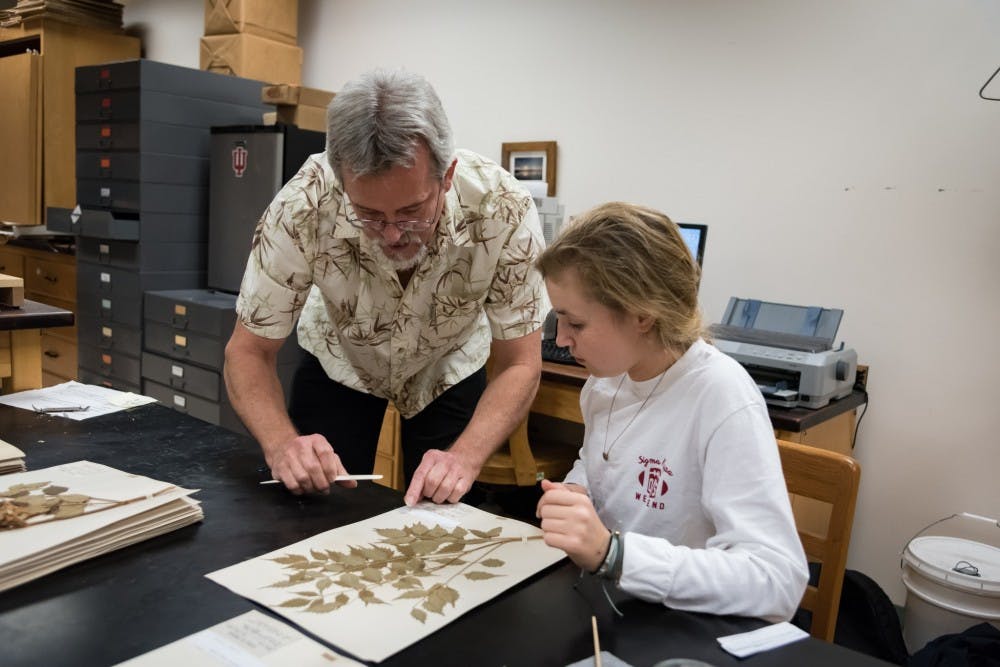The IU Herbarium recently finished a five-year project compiling more than 160,000 specimens from its preserved plant collection and is publishing it in an online database.
For each plant in the catalog, people can find its classification and location, a high-resolution photo and information about how the sample was collected.
Paul Rothrock, associate curator in the IU biology department, said putting information into simple terms was the goal.
“We wanted it to speak the average person,” he said.
IU Herbarium's collection includes plant specimen from more than 85 countries, with some as old as 100. More than 70,000 of the samples are from Indiana.
The searchable database is a useful tool for both botanists and nonbotanists, said Eric Knox, director of the IU Herbarium and a senior scientist in the biology department.
“If you’re just on a walk with your dog at Griffy Lake, and you see something, we made it easy for you to figure out what it is,” he said.
Knox said IU isn’t the only school to digitize its collection. The website used by IU Herbarium contains over 37 million specimen from about 400 schools, including Butler, IU Southeast and the University of Notre Dame.
Before digitalization, identifying species of plants involved leafing through manuals and learning elaborate terminology, including Greek and Latin terms, Knox said. He said online databases make it much easier.
“We’re taking information and making it available to people who aren’t biologists,” Knox said.
Rothrock said the catalog is an invaluable tool for researchers.
When researchers are interested in studying a plant from the online database, Rothrock said the IU Herbarium can send a sample of the specimen from its collection through the mail.
Rothrock said the database is useful for people studying climate change because it shows what plants used to look like, so researchers can compare them to what they look like now.
Knox said the tool is also useful for artists and high schoolers studying environmental science.
“It’s not just for biology nerds,” he said.
Knox said it took as many as 30 people each year to make the project come together, including many students.
IU senior Hannah Pak said she has worked with between 8,000 and 9,000 plant species in her two years at IU Herbarium.
“It’s bittersweet to see the project come to an end,” Pak said. “But rewarding.”



